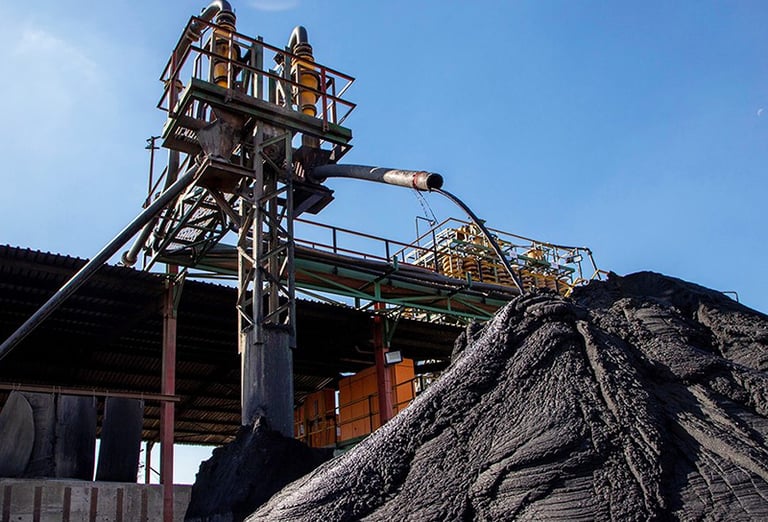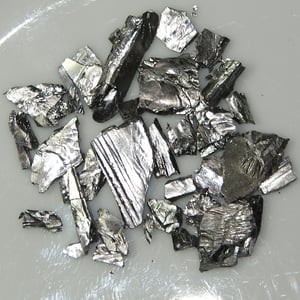Jubilee Metals Group PLC (LON:JLP) Chief Executive Officer Leon Coetzer caught up with DirectorsTalk for an exclusive interview to discuss their Q3 operations update.
Q1: We see that Jubilee Metals Group have released their quarter 3 operational results for the year, could you talk us through some of the key numbers?
A1: It’s been another strong performance by my team over this past quarter. Some key highlights in the numbers is of course our Hernic operation which continues to show consistent growth quarter on quarter, we just about touched £2 million net earnings for the quarter and this was achieved even in a low platinum price environment which was an exceptional performance by our group. You can imagine how the earnings will take off once the metal prices start showing some further recovery and, on that front, we are really excited about the news we’re hearing in the development of the fuel cell battery industry. The fuel cell battery holds enormous potential for the PGM industry, so we’ll keep a close eye on those developments.
Of course, as we showed in our results that our projects, typically being close to surface processing projects and not mining projects, they nicely buffered against low metal price environments with our Hernic project coming in at a unit cost for PGM ounce of below $400 when in fact you’re selling those PGM ounces in excess of $800/$850 an ounce. So, we continue to be nicely buffered in low metal price environments.
Q2: The announcement also contained some further detail on the Zambian Kabwe project and speaks of a possible partnership in refining the zinc, could you shed some further light on that for us?
A2: As you’ve seen our team have been working really hard to complete the new improved processing route for the material at Kabwe which of course contains the zinc, the lead and vanadium at surface. Our teams have concluded the development of the zinc circuit on the back of the solid test and development programme.
You’re quite correct, we hinted in the announcement to possibly gaining access to a nearby existing refinery which our engineers had gone through this refinery and reviewed in detail. We concluded that we could possibly convert this zinc refinery to suit our process, this holds of course great potential for our project because it shortens the construction time for this project. We of course would still construct the lead refining component of our project, but it would be able to accelerate the implementation of our zinc refining component quite rapidly.
Just to also clarify, in the announcement we speak of targeted throughputs for the refinery, we mentioned values of ultimately increasing the throughput up to 25 odd thousand tonnes per month and north of that. Just to clarify, that is the throughput to the refinery which means that that is the material after we first pre-process the feed material. That means we take the material from the tailings, we run it through several upgrading processes, so we first upgrade the zinc and lead content of that material and we’re estimating it will upgrade that content by more than 50% before we commence processing in the refinery. In effect, our actual rate of which we process material is 50% higher than the numbers we are suggesting because we are rejecting waste material prior to the material being refined in the refinery.
Q3: Just looking forward then, what can shareholders and investors look forward to in Q4 and beyond from Jubilee Metals Group?
A3: It’s going to be a busy quarter for us. We are building and commissioning in Q4, the extraction and dewatering facility in South Africa to feed our PlatCro project which is in partnership with Northam Platinum where we are transporting upgraded platinum material to the Northam refinery which commences refining material in February next year.
At the same time, we’re very excited about the building programme where also in Q4 we’re commissioning our fine chrome recovery plant at our Dilokong, it is a very important project for our company, we are demonstrating to the industry how we are able to extract metals that are lost to the industry into waste. We will be recovery that fine chrome, it’s an enormous amount of chrome that is situated at Dilokong that we will be processing, recovering and selling that chrome into the market. On the back of that, we are hoping to access very rapidly the wider chrome market to deploy the processing techniques into the chrome industry.
Of course, also in Q4 we are pushing really hard to conclude the approvals to commence the construction of our platinum refinery plant at Dilokong and we’re hopeful that we’ll gain those approvals from the government to commence that construction.
Just to make sure that we’re not bored at the beginning of Q4, we are also of course commencing with the Kabwe project where we are building these feed extraction systems, we are building the upgrade systems to upgrade the material at Kabwe before the refining of the material in the zinc and the lead circuits. So, a very busy Q4.
Beyond all of that which is extremely exciting for us, and no doubt for our shareholders, is that we are finally seeing enormous traction being gained in our industry where people are taking note of what we’re doing, how we are able to extract metals from mine waste. We are being approached by large companies to come in and review their waste and see how we can partner to extract those metals.
As an industry, we all have recognised the size of it and we are finally being recognised as one of the key players entering into that industry.











































